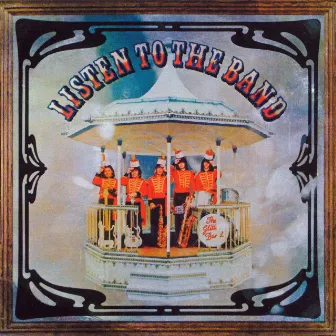Performance
Monthly Listeners
Current
Followers
Current
Streams
Current
Tracks
Current
Popularity
Current
Listeners 19,449
Top Releases
View AllBiography
Playing hard-stomping glam rock with singalong choruses as well as more straightforward romantic pop, the Glitter Band were named for their association with glam idol Gary Glitter. They originally came together in 1972, following Glitter's own breakthrough with the hit "Rock and Roll." With his first major concert tour looming, Glitter and producer/co-conspirator Mike Leander needed a full-time backing band for live work. Although the band was not physically present on any of Glitter's own hits (according to the singer, Mike Leander alone played every instrument himself), the Glitter Band not only accompanied Glitter on his tours and television appearances, they also racked up seven hits of their own, six of them making the Top Ten. Ultimately, the Glitter Band became almost as successful, and certainly as well-known, as Gary Glitter himself. And while the band's original sound was firmly cut in the style of their namesake, by the end of their career, they'd developed into a wholly original and utterly captivating act in their own right. The Glitter Men, as the group was originally known, was built around an idea that Glitter and Leander had first experimented with during the mid-'60s: a sprawling combo whose sound and visuals were based upon a core of two drummers and two saxophonists. Their choice of bandleader also reached back to that earlier era -- baritone sax player John Rossall had previously played with Leander's own eponymous orchestra, and with Glitter in the subsequent Boston International. The decision to launch the Glitter Band as a recording act in its own right was made in late 1973. Written by John Rossall and Gerry Sheppard, their debut single, "Angel Face," was an obvious close relation to the Glitter sound, a pounding, stomping number that raced to number four in Britain in March 1974, but it unquestionably possessed a charm all of its own. It was followed by "Just for You" and "Let's Get Together Again," both of which kept the group in the Top Ten, while their debut album, Hey, reached number 13 despite being comprised of little more than reprises of their hits. Evidence that the Glitter Band were capable of meeting greater challenges than the Glitter sound normally set was delivered in early 1975 with their fourth single, the soft rock ballad "Goodbye My Love." A major creative departure, "Goodbye My Love" climbed to number two, while the group's abilities as songwriters received another boost when labelmates Hello scored a European hit with a cover of the Glitter Band's own "Game's Up." (Hello also scored with another Hey-era staple, a cover of the Exciters' "Tell Him.") Buoyed by the massive success of "Goodbye My Love," the Glitter Band selected another soft rocker for their next single, "The Tears I Cried," following through over the next 12 months with the similarly styled "Love in the Sun" and "People Like You, People Like Me." Two further albums, Rock 'n' Roll Dudes and Listen to the Band, were equally courageous, with the group's ambition now so pronounced that they even brushed aside the first signs that their invincibility was cracking: the chart failure of the singles "Alone Again" and "Don't Make Promises." In 1976, as Gary Glitter announced his retirement, the Glitter Band cut their last sonic links with the old sound. With John Rossall having quit for a solo career, the remaining members signed with CBS and, shortening their name to the G Band, set to work on their most ambitious collection yet, Paris Match. An utterly un-Glitter-like set, it was characterized by a truly audacious cover of the Rolling Stones' "Sympathy for the Devil." Unfortunately, although the band had moved on, their fans hadn't. In late 1977, the group transferred to Epic for one final single, a cover of the Bee Gees' "Gotta Get a Message to You," but by 1978, the band had all but fallen apart. 1979 saw Sheppard and drummer Pete Phipps hook up with former Sparks/Jet keyboard player Peter Oxendale for the album Put Your Money Where Your Mouth Is, credited to Oxendale & Sheppard and released in the U.S. only. The Glitter Band regrouped under their old name in 1980, around the same time as Gary Glitter himself moved back into focus. In 1981, the group released a new single, "Until the Next Time," maintaining a steady stream of further releases over the next five years. A new album, recorded live at the London Marquee Club, appeared in 1985, while a succession of hits collections (several featuring newly re-recorded material) kept their name alive on the record shelves. In 2009, drummer Pete Phipps (who had taken ownership of the name "The Glitter Band") and original bassist and vocalist John Springate put together a new version of the group with the addition of Dominic Rodgers on guitar and vocals, and Eddie Spence on keyboards and vocals. This edition of the Glitter Band released a single in 2016 featuring new recordings of "Let's Get Together Again" and "People Like You and People Like Me." Original Glitter Band bandleader John Rossall died on October 2, 2021, a year after releasing a comeback album, The Last Glam in Town; he was 75 years old. ~ Dave Thompson, Rovi













